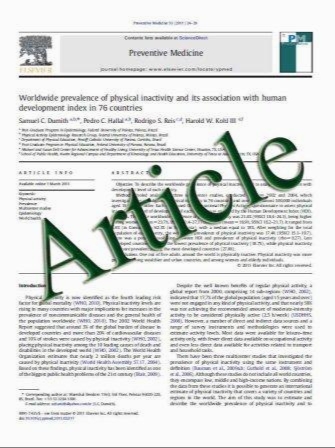What Do Brazilian Pediatricians Know About Celiac Disease?
- نوع فایل : کتاب
- زبان : انگلیسی
- مؤلف : Camilo Vieira Marı´lia Matos Thaise Quaresma Juliana de Oliveira Cibele Dantas Ferreira Adriza Silva Daniel Diniz-Santos Luciana R. Si
- چاپ و سال / کشور: 2010
Description
Introduction Celiac disease (CD) is a common illness, affecting 0.5–1% of the population. Its classic presentation consists of gastrointestinal symptoms, however, many extra-intestinal symptoms and some associated diseases have been studied. Pediatricians should know the typical and atypical presentations of CD and how to diagnosis and treat its complications. The aim of this study was describe what pediatricians in Brazil know about CD. Methods A descriptive, cross-sectional study with pediatricians who participated in the Nestle´ Pediatrics Course, in the city of Natal, Brazil, in 2008. They were asked to complete a self-applicable questionnaire covering aspects concerning the prevalence, diagnosis, and treatment of CD and the conditions associated with this disease. Results A total of 632 pediatricians completed the questionnaire. The majority of respondents (82.9%) were female. All the geographical regions of Brazil were represented. More than 65% of respondents had undergone specialist training in pediatrics, and 40% of respondents had worked as pediatricians for more than 25 years. Only 22% replied that celiac disease may be asymptomatic, 57% stated that antigliadin antibody measurement represents the best screening tool for the disease, and two-thirds replied that bowel biopsy would be the most indicated method. The pathologies and conditions associated with celiac disease were identified by fewer than 50% of respondents. Exclusion of gluten from the patient’s diet was mentioned as the treatment for celiac disease by 86.4% of the pediatricians. Conclusions We conclude that pediatricians have superficial information about CD. The need for relevant information on celiac disease is fundamental and is recognized by the pediatricians themselves
Dig Dis Sci (2011) 56:799–804 DOI 10.1007/s10620-010-1339-6 Received: 3 April 2010 / Accepted: 29 June 2010 / Published online: 15 July 2010


